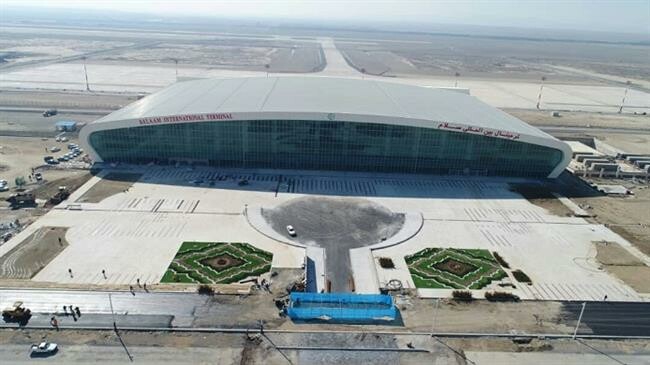Wednesday 19 June 2019 - 18:48
Story Code : 352188
Iran opens key air terminal abandoned by Europeans
The Salam Terminal, 30 km southwest of Tehran, is the second of three at Tehran�s Imam Khomeini International Airport (IKIA) inaugurated by President Hassan Rouhani Tuesday to handle 5 million passengers a year.
Salam will increase the airport�s overall annual capacity by 80 percent to about 12 million passengers, officials of the IKIA Airport City told Tasnim news agency.
The project was part of an expansion plan which also included building the third terminal named Iranshahr. French industrial group Bouygues and A�roports de Paris signed a preliminary deal in January 2016 to build and run T3.
The company as well as its fellow French partner Aeroports de Paris, however, canceled the $2.8 billion agreement in 2017, citing failure to get financial backing from international banks, which are still wary of US sanctions over their activities in Iran.
Iran had hired the Netherlands Airport Consultant Company (NACO) as its main adviser in the project to expand IKIA�s capacity to 30 million passengers.
NACO and the French companies were among scores of international firms which rushed to Iran to establish a position as the country re-opened for business after the lifting of sanctions in early 2017.
Up for grabs was access to a market with 80 million people and annual output of more than $400 billion, making Iran the biggest economy to rejoin the global trading system since the Soviet Union broke up over two decades ago.
At the time, Tehran�s IKIA went on a high-flying reinvention drive as part of a long-term plan to boost trade and turn Iran into a regional hub after its nuclear deal.
Central to the overarching master plan called Imam Khomeini Airport City are two new terminals and a vast airport free-trade area that includes sections for industry, logistics, hotels and conference centers.
The airport city, to be developed in phases over 20 years, needs tens of billions of dollars of investment to reach its potential, some estimates putting it as much as $50 billion.
Apart from the Netherlands and France, companies from South Korea and China entered talks to help build the aerotropolis which was viewed as a gem because it connects to Tehran, Iran�s capital and by far its largest city.
France�s AccorHotels opened Novotel and Ibis hotels connected to the existing airport in September 2016, underlining international interest in airport-related infrastructure in Iran.
Located 30 kilometers southwest of Tehran, the aerotropolis provides room for a new city to grow, far enough from the teeming capital of more than 12 million, and vacuum up part of its population load.
Many offices and businesses are hoped to move to the new megacity, a nucleus around which commercial centers, residential zones, and transport infrastructure would be organized.
Currently, the Tehran metro network is linked up with IKIA�s first terminal, but a separate line is planned to end at the new terminals which will receive international flights, with domestic flights to be moved from Mehrabad airport to T1.
The airport lies along the main highway from Tehran to Bandar Abbas, with access to Isfahan and Shiraz. A high-speed bullet train connecting Tehran to Isfahan is about to connect through IKIA.
It will have four major zones: an aviation zone, a free economic zone, a special economic zone and a mixed-use zone which will be linked by road and rail to four corners of Iran in a "smart" transport network.
The airport is accessible from Semnan province in the east, Qom and Isfahan provinces to the south, Markazi province to the southwest, and Alborz and Qazvin provinces to the west.
To reach its potential, however, the ambitious plan sorely needs foreign company expertise and funding which US sanctions have made scarce.
Tuesday�s inauguration of the second terminal is a catalyst for the utilization of domestic resources to implement mega projects without reliance on outside assistance.
Even before the US reimposed sanctions on Iran last year, foreign companies took a wait-and-see approach after signing a series of preliminary agreements with Iranian entities.
Officials said Salam is the first air terminal designed and built by Iranian experts. Iran�s Bonyad Mostazafan provided funding under a BLT (build-lease-transfer) deal signed in January 2017.
# Tags











